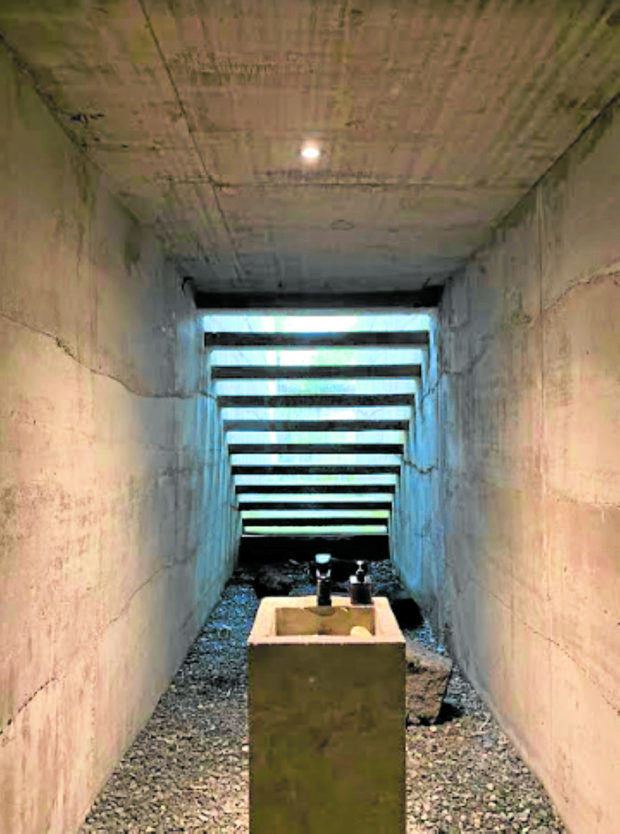It’s human nature to long to evolve and become better. Take a look around and breakthroughs surface through old practices and beliefs.
When I visited the CinePOP cinema in Cubao, coowner Carlson Chan took us around the premises, enlightened us on the history of the structure, and mentioned the term wabi-sabi. His passion for the project was contagious and we wanted to learn more about everything, from the seemingly tiny details to the comprehensive history of the structure.
As we explored, I learned all sorts of things, such as how to tell which bamboo was the “parent,” and which ones were the offspring. The grounds were planted with bamboos.
CinePOP’s bathroom was also something that was out of the ordinary, as they integrated different materials for their doors and prioritized natural lighting. Chan mentioned that whenever it rains, the stairs unintentionally give a waterfall effect that is visible from the sink. I have an affinity for industrial design and cement-finish structures. The imperfection of CinePOP was something I was in awe of because it takes a great deal of creativity to incorporate a structure’s past, alongside your own creative vision.

The Japanese mindset of “perfect” was something I never fully appreciated back then but seeing it in something tangible like a building made my mouth gape. It seemed to me as if that moment was ephemeral, but it wasn’t. Wabi-sabi was something evident in so many aspects in my everyday life.
Everyday life
Wabi-sabi in fashion is something that is coming to light, with patchwork and customization on the rise. For patchwork, people collect fabric from different articles of clothing, and they turn it into a wearable piece. With so much history coming from different origins, the art of customization is seen as avant-garde as people express themselves authentically, as opposed to a one-size-fits-all purchase.
As I scrolled through Instagram, I noticed a unique technique of splitting a polo into two, and mixing and matching them with another polo. The store @thrift___spies gives a spinoff to regular polos, and gives character to clothes to personify them.
There is something about how denim fades, and shirts go loose that makes them human in a way. We sometimes discard clothes when they no longer look like they did when we bought them, yet some can recognize there’s a beauty to it. There’s a popular belief that fashion isn’t about what you wear, it’s about how you wear it.
To supplement that, many believe that you are what you wear, as fashion is an outlet of creative expression, maybe just by the fact that no wearer is the same makes fashion transitory, and imperfect to all.
Nature and natural structure meet at CinePOP.
In a more abstract perspective, people exemplify wabi-sabi the most with all our different idiosyncrasies. We feel devalued once we try so hard to become perfect in one aspect, yet somehow, results don’t reflect our efforts. When we lie awake at night, we think of mistakes we made five years back, or a wrong move that caused us to lose something.
But we are not perfect, and like architecture or fashion, we are still worthy and adored. Our mistakes or flaws are like those cracks we see in walls that give them some character. In psychology, there is something called “the Pratfall effect,” wherein mistakes are recognized as a tool to connect with people.
Perfection is something that drives people away, and sometimes the race toward it even makes us lose ourselves in the process. While we must always strive to be better, sometimes being the best is merely being ourselves. With that, I hope you thrive in an environment where your individuality is welcomed and loved, not suppressed. —CONTRIBUTED INQ
By